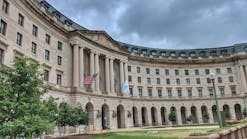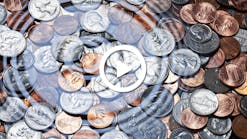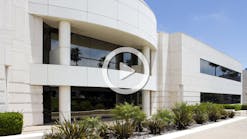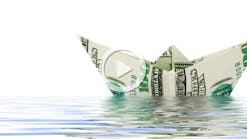EPA Releases First Water Infrastructure Finance and Innovation Act Report
Lenexa, KS — The US Environmental Protection Agency (EPA) has released it's first-ever Water Infrastructure Finance and Innovation Act (WIFIA) program annual report. Through 2019, the WIFIA program has financed more than $3.5 billion in loans, saving borrowers $1.2 billion and helping improve water quality for more than 20 million Americans.
Two projects are currently under construction using funds secured through the WIFIA program: the Saddle Creek Retention Treatment Basin in Omaha, NE, and the Deer Creek Sanitary Tunnel and Sanitary Relief project in St. Louis. These projects cost $70 million and $97 million, respectively. In addition to these projects, a further six projects in Kansas and Missouri were recipients of WIFIA loan offerings.
The Saddle Creek Retention Treatment Basin in Omaha will be a partially underground structure where combined sewage is held and treated during wet weather events. The project is part of the city’s sewer system, which serves 400,000 people over 300 square miles in the metro area.
The Metropolitan St. Louis Sewer District will construct a new pump station and replace or rehabilitate sewer pipes to address overflows and improve the water quality in Deer Creek. These projects will provide storage for excessive inflow and infiltration during wet weather events; regulate sanitary flow into the River Des Peres foul water system; allow for the removal of 24 constructed sanitary sewer overflow (SSO) outfalls into the Deer Creek channel; alleviate surcharging, basement backups; and meet Total Maximum Daily Load (TMDL) requirements.
“The Water Infrastructure Finance and Innovation Act (WIFIA) and the Clean Water State Revolving Fund (SRF) provide for critical funding to states and local governments to finance important water quality improvement and water infrastructure projects,” said EPA Region 7 Administrator Jim Gulliford. “EPA works collaboratively with state and local governments through these programs to protect our water resources and water quality for years to come.”
Established by Congress in 2014, the WIFIA program is an EPA federal loan and guarantee program focused on helping meet the growing water infrastructure needs in communities across the country. The program provides long-term, low-cost supplemental credit assistance to creditworthy drinking water and wastewater projects of national and regional significance.
WIFIA loans can finance a wide range of water projects, including stormwater management and green infrastructure; traditional drinking water and wastewater treatment plants and conveyance systems; water recycling and desalination plants; drought prevention and mitigation projects; nonpoint source pollution control; and source water protection. Eligible WIFIA borrowers include local, state, tribal, and federal government entities; partnerships and joint ventures; corporations and trusts; and State Revolving Fund programs.
Through 2019, the WIFIA program has closed 14 loans ranging from $20.7 million to $699 million. Together, WIFIA has provided $3.5 billion in loans to help finance more than $8 billion for water infrastructure projects, while creating over 15,000 jobs. Of those projects, 57% directly support Clean Water Act and Safe Drinking Water Act compliance.
In 2019, EPA invited 38 new projects to apply for WIFIA loans, totaling approximately $6 billion to help finance over $12 billion in water infrastructure investments. These projects will help support key Agency priorities, including reducing lead and emergent contaminants and developing water reuse and recycling capacity. Together, the selected projects will improve water quality for 24 million people in 18 states.
Learn more about the WIFIA program and read the WIFIA annual report at www.epa.gov/wifia.






